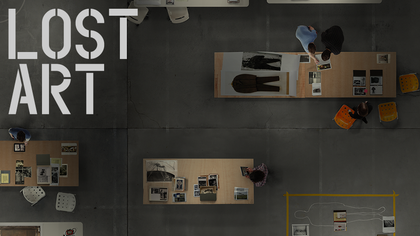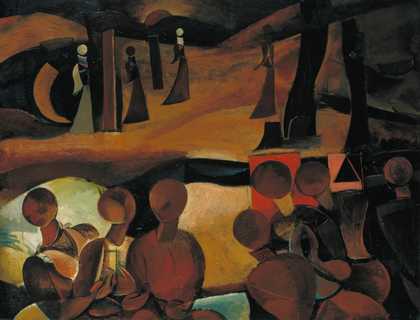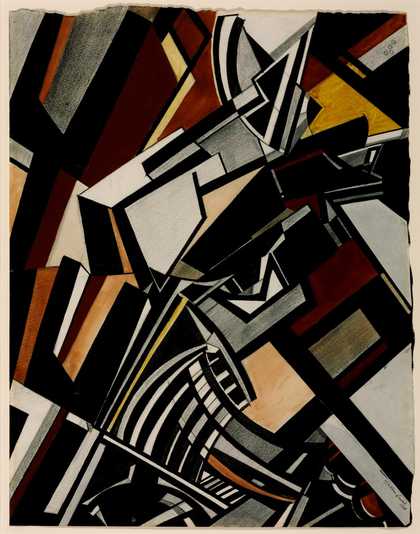Kermesse 1912
No one knows what Wyndham Lewis’s painting Kermesse of 1912 looks like. There are no photographs of it; and if there were preliminary drawings, none have survived. The nearest we have to a direct visual record is a tiny print – it is the size of a cigarette box – made by someone who saw the painting in 1917.
To visualise the lost Kermesse and to imagine what impact this nearly three metre square canvas had on contemporaries, we need to look to contemporary written accounts. Some critics had fun at the painting’s expense. One wrote, ‘the dancers, it is true, look like some gigantic fantastic insects descended upon earth from some other planet’. But there was no doubt that many in the art world thought it an important work. The painter Augustus John declared himself ‘greatly impressed’ by the ‘energy and grandeur of the conception’; and Walter Sickert later remembered it simply as ‘magnificent’. The critic Frank Rutter recalled, ‘Here for the first time London saw by an English artist a painting altogether in sympathy with the later developments in Paris.’
An old friend of Lewis, Captain Richard Wyndham, bought Kermesse in 1927. Wyndham was a wealthy Anglo-Irish peer and amateur painter, who had acquired Lewis’s work in the past and had even supported him with a stipend. Despite this, he found himself – or thought he found himself – viciously satirised by Lewis in The Apes of God 1930, a novel that ridiculed the wealthy patrons, critics, socialites and dilettantes who followed and aped true artistic genius (a ‘Dick Whittingdon’ was characterised as ‘the authentic Ape, the world’s prized Ape’). Relations were severed and Wyndham lost little time in getting rid of two paintings by Lewis he owned, including, it is thought, Kermesse, though, in fact, no one knows exactly what happened to it.
What, then, was the significance of the loss of what the artist himself felt was still a rather rough and ready, and even unfinished, canvas? Ultimately, it hinges on the very real possibility that the painting was the first thorough-going response to advanced continental art, achieved on an unforgettable, mural-like scale by one of England’s most brilliant – if also combative and unpredictable – artists.




